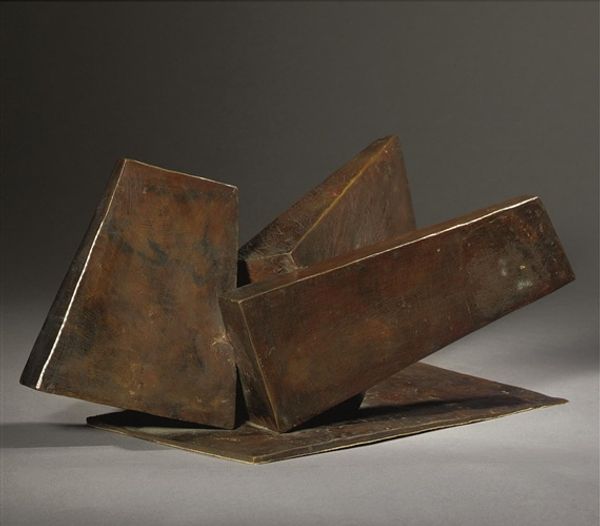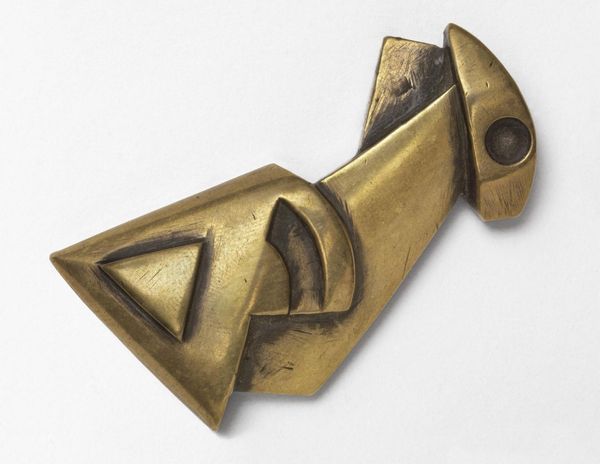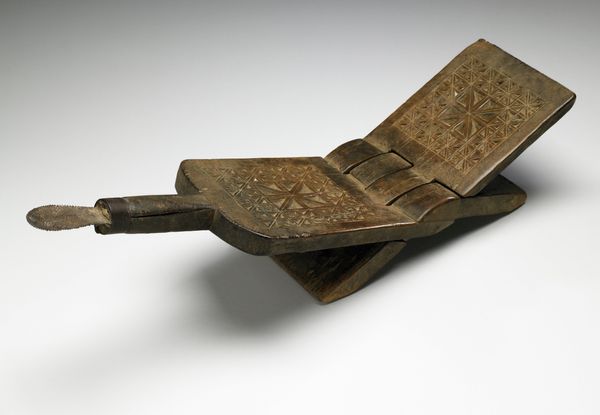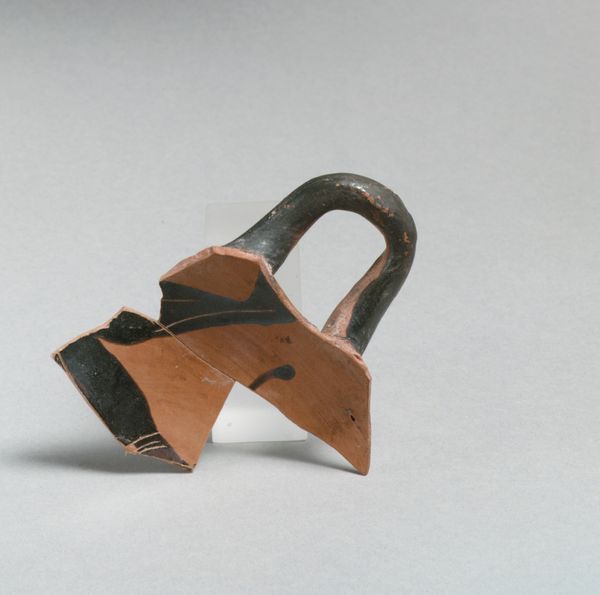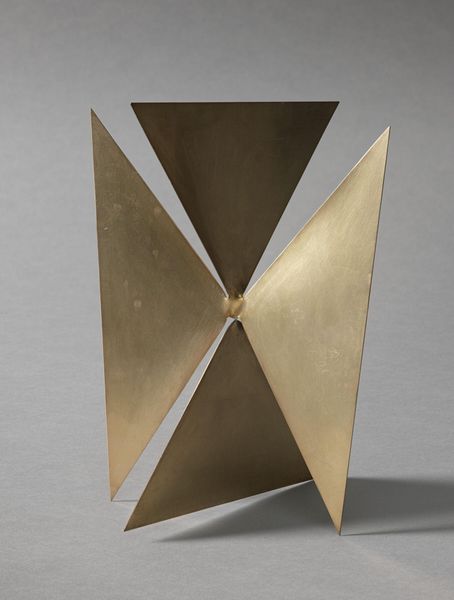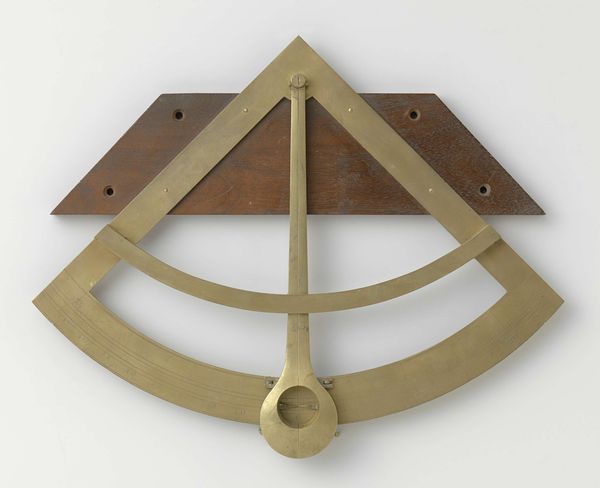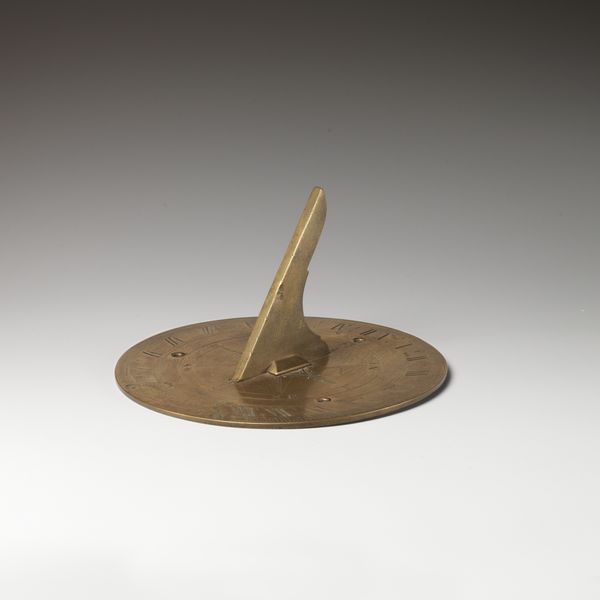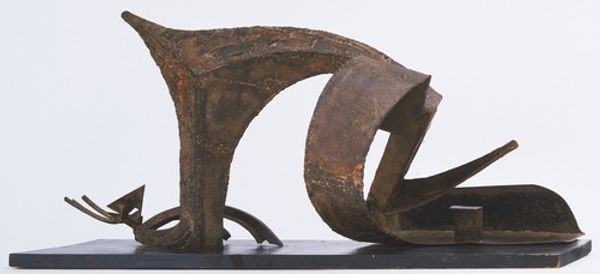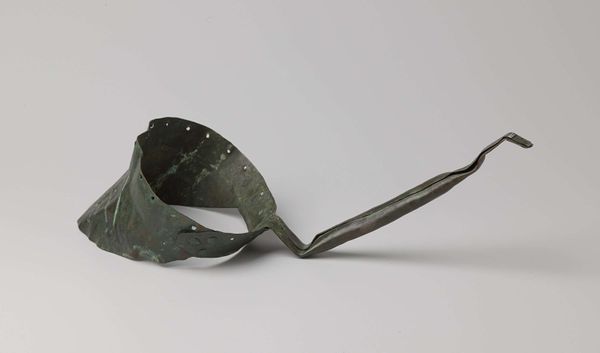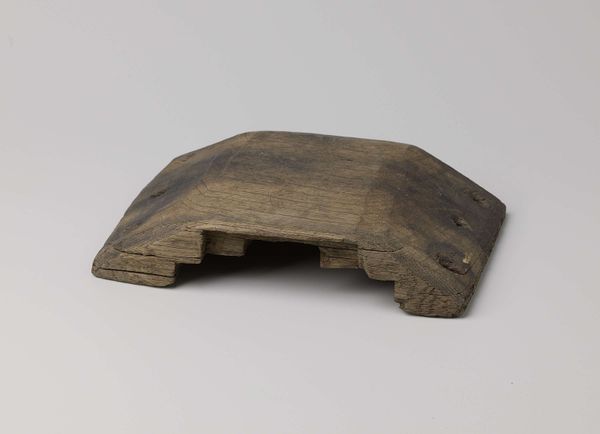
metal, wood
#
art-deco
#
metal
#
geometric
#
wood
Dimensions: 5 3/4 x 8 x 7 1/8 in. (14.61 x 20.32 x 18.1 cm)
Copyright: No Copyright - United States
Editor: Right now, we’re looking at a most unusual teapot, created around 1920 and held by the Minneapolis Institute of Art. It's constructed from metal and wood in angular, geometric shapes. It feels almost aggressively modern! What is your interpretation of this work? Curator: It's fascinating, isn't it? I'm drawn to how it takes something as homely as a teapot and gives it this severe, almost monumental presence. Look at the hammered metal, contrasting with the smooth wood. It’s undeniably Art Deco, a style known for its sleek lines and machine-age influence, though with a crafted look that hints at something ancient, almost ziggurat-like. I can imagine a stylish robot enjoying a cuppa from this. Do you think the artist was commenting on how industry was shaping everyday life? Editor: I hadn’t thought of the robot angle! That's a really interesting take, blending the antique with the futuristic. I was more focused on the pure geometry and almost brutal simplicity. Curator: Exactly! Brutal yet elegant. Perhaps that tension between crafted and manufactured, organic and geometric, is the real heart of the piece. It asks us: what does it mean to bring art into the domestic space, into the everyday? Does it serve, or does it dominate? Editor: I guess it’s a conversation starter either way. Something so functional turned into something so thought-provoking. It really shakes up your perception of what a teapot, of all things, could be! Curator: Precisely! And that's the magic of art, isn't it? Taking the mundane and turning it into something utterly…triangular. It leaves you brewing ideas long after the tea is gone.
Comments
minneapolisinstituteofart almost 2 years ago
⋮
Although the designer of this 1920 teapot remains unknown, it is no less intriguing. Its angular form conveys an immediate sense of modernity, yet, the medium of hammered pewter recalls the conservative Arts and Crafts table accessories designed for British trade at the turn of the century. The resulting blend of past, present, and future, Cubist modernity with a dash of British eccentricity, remains as arresting today as it must have been in the mid-20s.
Join the conversation
Join millions of artists and users on Artera today and experience the ultimate creative platform.
